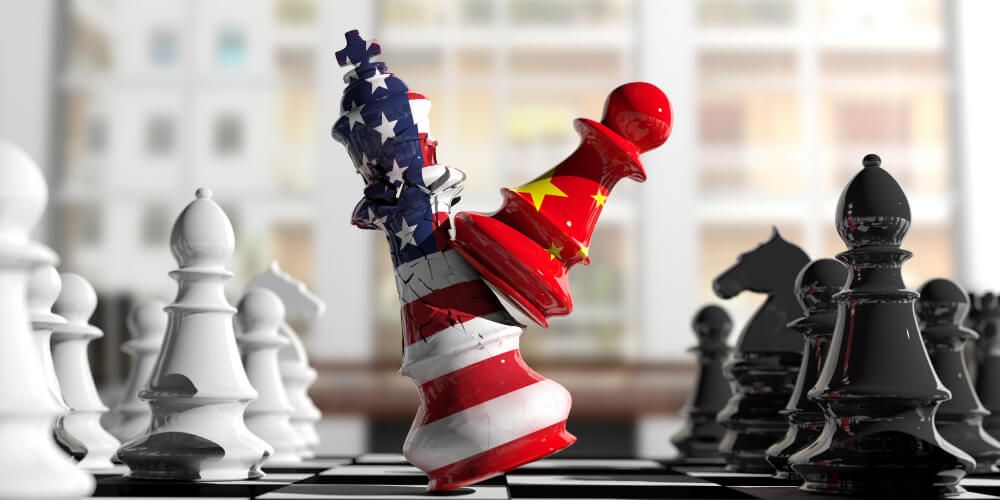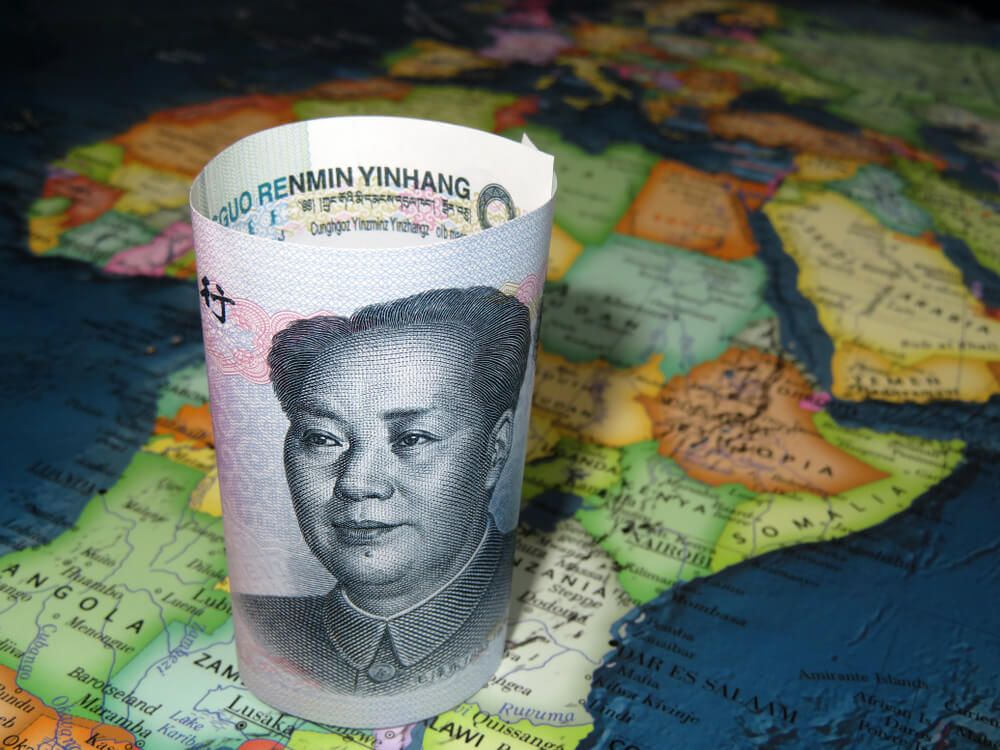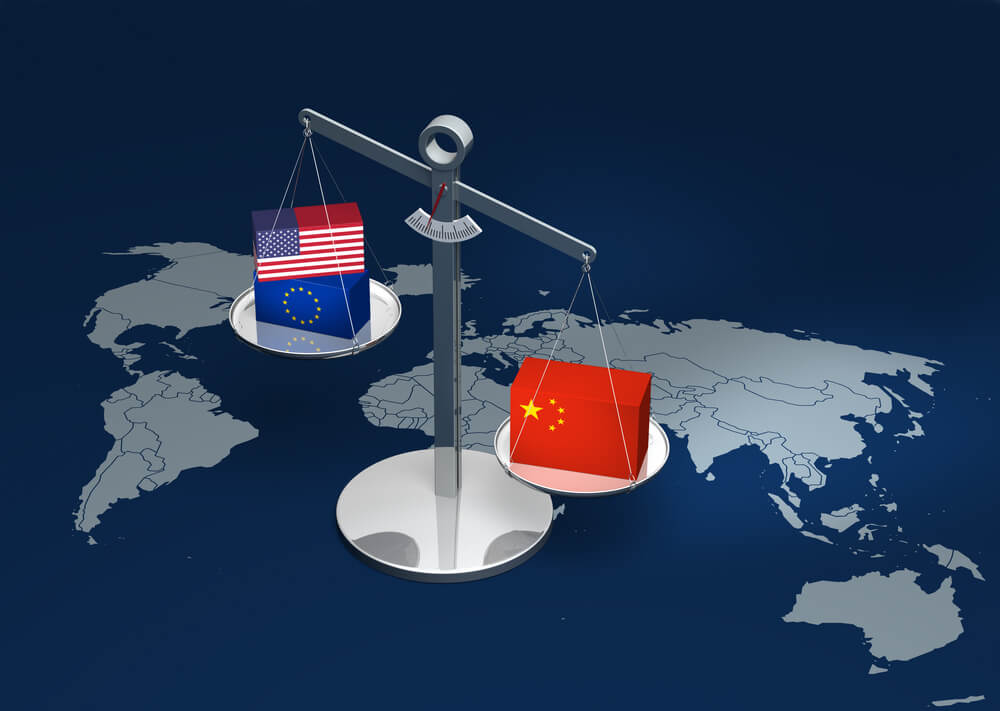China’s America policy is intertwined with its global strategic ambitions. Beijing has aspirations to become the world’s top superpower, and it must therefore overtake the current global leader: the United States. This competition is taking place in the economic, technological, and military domains, but also in the ideological field, with China keen to fight against an international order dominated by the principles of democracy and the rule of law.
A Quest for Power
Upon assuming office in 2012, Xi Jinping named this ambition for power “the Chinese dream for the great rejuvenation of the nation”. At the start of his second term in 2017, Xi set the “two goals for the century”: to “basically realize socialist modernization” by 2035, and then to make China a “great modern socialist country” and to construct a “world-class” military by 2049, the year of the regime’s centenary. On the military level, an intermediate objective is to construct, for the one-hundredth anniversary of the People’s Liberation Army in 2027, a modern force ready for combat.
The United States represents the main obstacle to China’s ambitions for power due to the former’s head start on the diplomatic (network of alliances), economic, military, and technological levels. Moreover, because catching up with the Americans on a qualitative and quantitative level would take decades, China has gambled on technological breakthroughs (in the fields of artificial intelligence and quantum technology, for example) in order to overtake its great rival. Indeed, certain innovations could give China a crucial advantage in the military, industrial, standards, or trade domains.
China has therefore invested massively in technology through various plans, such as the Made in China 2025 plan (published in March 2015), which was updated by the 14th Five-Year Plan in March 2021, which focuses largely on new technologies. These ambitions have not gone unnoticed by the United States, which has already made arrangements to hinder Chinese technological progress.
Taiwan
Beijing sees Washington as a threat to its project for the “unification” of Taiwan with the People’s Republic. The increase in military, political, and economic coercion by Beijing since 2020 has led the United States to adjust its approach. Washington is officially maintaining its “strategic ambiguity” regarding Taiwan, but it has bolstered its political and military support for Taipei with the aim of dissuading Beijing from launching an attack. Fearing the prospect of a Chinese offensive that would have consequences for the entire international community, more and more states are expressing their political support for Taiwan, sparking further hostile reactions from Beijing.
Global Influence
In order to become a global superpower, China also seeks to compete with the United States around the world. This was one of the objectives of the Belt and Road Initiative (BRI), Xi Jinping’s flagship project launched in 2013, which was primarily designed to develop China’s relations and its influence. Ten years later, the results of the BRI have been mixed to say the least. Beijing has experienced several setbacks, and its “loan diplomacy” has raised suspicions. Furthermore, China no longer seems to have the means to match its ambitions, since Chinese overseas lending has been declining drastically since 2017.
Although the momentum behind the BRI seems to be slowing, China’s ambitions to rival the United States on the international stage have by no means diminished. Xi Jinping recently launched dual international projects: the Global Development Initiative, which he announced at the United Nations in September 2021, and the Global Security Initiative, unveiled in April 2022, with the roadmap published in February 2023.
In light of the current geopolitical tensions, these initiatives do not target Western countries, but rather seek to develop a circle of Chinese influence in the Global South, in order to compete with the United States, in particular within UN bodies.
Domestic Challenges
However, the United States is not the only obstacle to China’s quest for power. Other equally crucial challenges are found in China itself. Despite China abandoning its “zero COVID” policy in late 2022, the country finds itself facing a structural economic slowdown that is likely to hinder its development capacities and exacerbate inequalities. The business environment is also increasingly restrictive for foreign economic actors, many of which are revising their investment strategies in the Chinese market.
China is also held back by its lack of social reforms against the backdrop of rapid population aging, as illustrated by demographic decline in 2022. These economic and demographic issues may also have an impact on social stability, in a society where the prospects of the younger generations are dimming, and where the authoritarianism of the Communist Party is becoming increasingly radical.
The European Position
Although the European Union has gradually strengthened its China policy since 2019, it appears that not all European leaders, especially those in Western Europe, have taken heed of Beijing’s desire to remodel the international order according to principles that run counter to the fundamental values of the EU, such as the rule of law and human rights. France and Germany, in particular, have maintained rather ambiguous lines on Beijing, seeking to preserve bilateral economic relations and deferring sensitive political issues to Brussels.

















